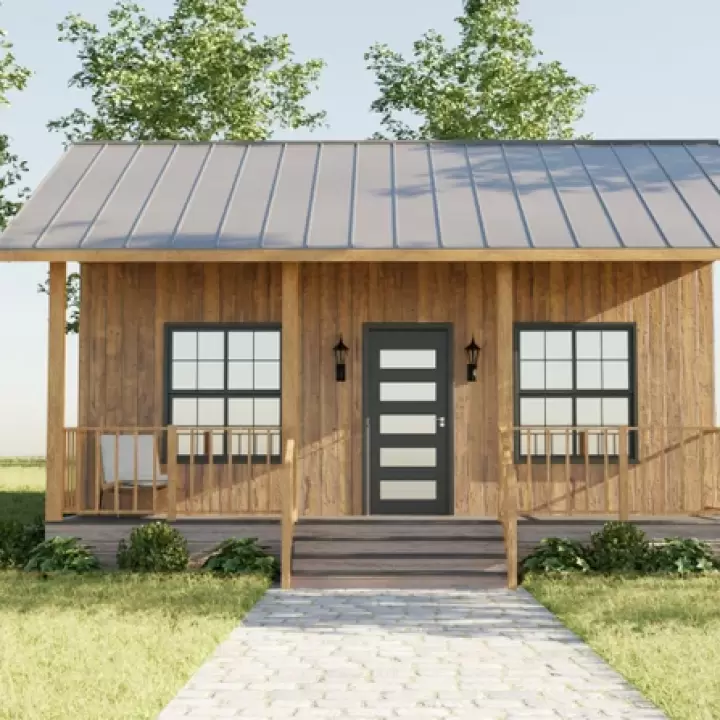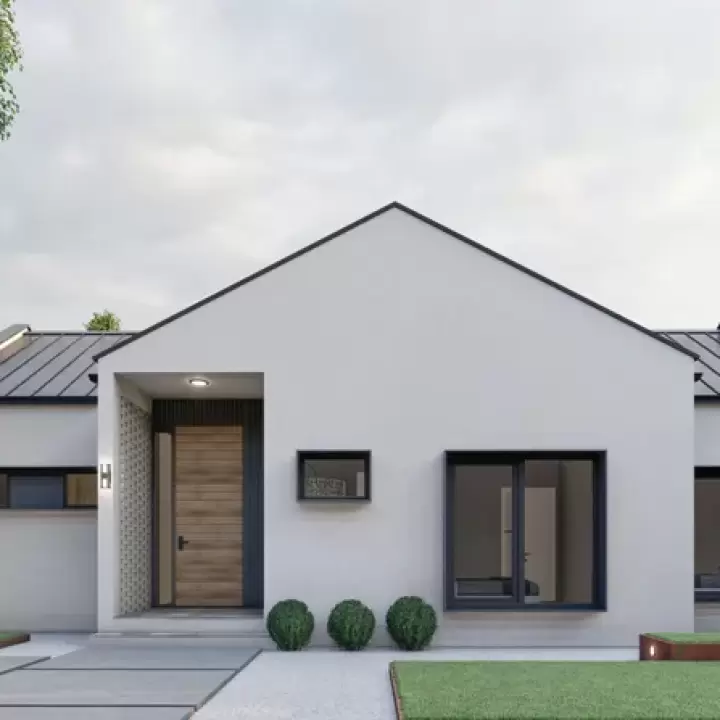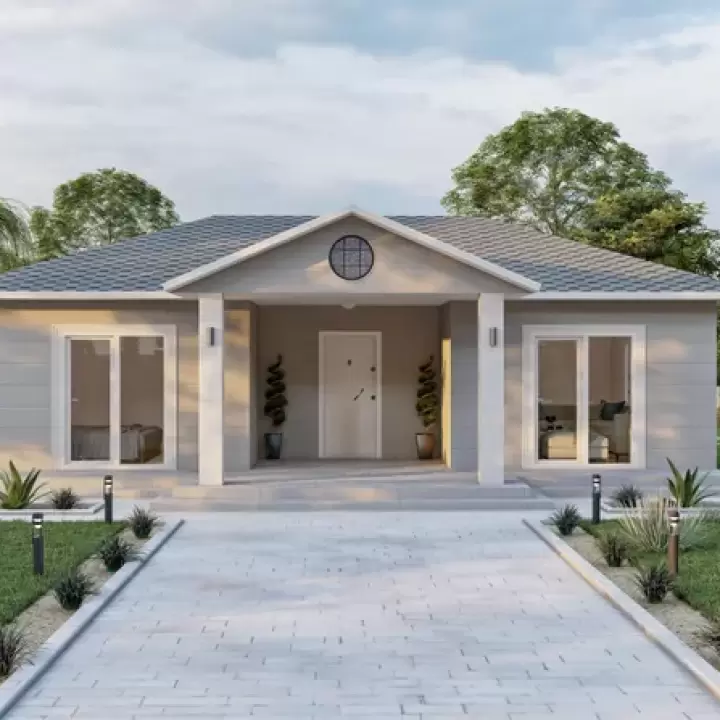
Designing Tiny Homes How Small A-Frame House Plans Offer Big Benefits
In the world of home design, small A-frame houses have become increasingly popular for their unique aesthetic, efficient use of space, and practical benefits. These tiny homes offer an ideal solution for those seeking a charming retreat or a minimalist lifestyle without compromising on comfort and functionality. In this article, we'll explore the many advantages of small A-frame house plans and why they might be the perfect choice for your next home.
The Appeal of A-Frame House Plans
A-frame houses are distinguished by their steeply sloped rooflines and triangular shape, which not only create a striking visual impact but also offer several practical benefits. The iconic design of A-frame houses lends itself well to a variety of environments, from mountain retreats to coastal getaways. Here’s why small A-frame house plans are capturing the imagination of homebuyers and builders alike:
1. Efficient Use of Space
Small A-frame houses are renowned for their efficient use of space. The triangular design allows for a loft or second story within a compact footprint, making the most of vertical space. This design flexibility can result in a surprisingly spacious interior despite the small overall size of the home.
2. Unique Aesthetic
The distinctive shape of A-frame houses offers a unique and charming appearance that stands out from traditional home designs. The sharp angles and open interior spaces create a sense of drama and character that can be tailored to suit various styles, from rustic to modern.
3. Energy Efficiency
The steeply sloped roof of an A-frame house helps with natural temperature regulation. In colder climates, the design promotes snow shedding, which can reduce the risk of roof damage. In warmer climates, the high ceiling encourages air circulation, helping to keep the interior cooler. Additionally, the compact design of small A-frame houses often means less energy is required for heating and cooling.
Benefits of Small A-Frame House Plans
Small A-frame house plans come with a range of benefits that make them an attractive choice for many homeowners. Here are some key advantages:
1. Cost-Effectiveness
Building a small A-frame house can be more affordable than constructing a larger home. The smaller footprint means lower material and labor costs, and the efficient design can reduce long-term maintenance expenses. For those on a budget, a small A-frame house offers a cost-effective way to achieve homeownership.
2. Versatility
Small A-frame houses are incredibly versatile. They can serve as primary residences, vacation homes, or even rental properties. Their compact size makes them suitable for smaller lots, and their unique design allows for creative interior layouts and customization.
3. Sustainability
The environmental impact of small A-frame houses is typically lower than that of larger homes. With less space to heat and cool, these homes often consume less energy. Additionally, the ability to incorporate sustainable materials and practices in the design further enhances their eco-friendliness.
4. Ease of Maintenance
Maintaining a small A-frame house is generally easier and less time-consuming than caring for a larger home. The straightforward design minimizes complex maintenance tasks, and the compact size means fewer areas to clean and upkeep.
5. Connection to Nature
Many small A-frame house plans emphasize large windows and open spaces, which help to create a strong connection between the indoors and outdoors. This design choice enhances natural light and offers stunning views, making the most of scenic locations and natural surroundings.
Designing Your Small A-Frame House
When planning a small A-frame house, there are several design considerations to keep in mind to ensure that the final result meets your needs and preferences:
1. Maximize Vertical Space
Take advantage of the A-frame’s vertical design by incorporating a loft or mezzanine level. This additional space can serve as a bedroom, office, or storage area, providing extra functionality within the small footprint.
2. Optimize Floor Plan
Design an open and efficient floor plan that makes the most of the available space. Consider multi-functional furniture and built-in storage solutions to enhance the usability of each area.
3. Choose the Right Materials
Select materials that complement the A-frame design and enhance its durability and energy efficiency. Natural materials such as wood and stone can create a warm and inviting atmosphere, while modern finishes can offer a sleek and contemporary look.
4. Incorporate Large Windows
Large windows or glass doors are essential for maximizing natural light and connecting the interior with the outdoor environment. They also contribute to the aesthetic appeal and can make the small space feel larger and more open.
5. Focus on Energy Efficiency
Incorporate energy-efficient features such as high-quality insulation, energy-efficient windows, and sustainable heating and cooling systems. These elements will help to reduce your energy consumption and enhance the overall comfort of your home.
FAQ
1. What are the typical dimensions of a small A-frame house?
Small A-frame houses can vary in size, but they typically range from 400 to 1,000 square feet. The compact size allows for efficient use of space while still providing all the necessary amenities.
2. Can a small A-frame house be used as a primary residence?
Yes, many small A-frame houses are designed as primary residences. Their efficient use of space and functional layouts make them suitable for full-time living, especially for those who prefer a minimalist lifestyle.
3. What are the benefits of building a small A-frame house in a remote location?
Building a small A-frame house in a remote location offers benefits such as privacy, tranquility, and a strong connection with nature. The compact design is ideal for smaller lots and can enhance the overall experience of living in a secluded area.
4. Are small A-frame houses suitable for families?
Small A-frame houses can be suitable for families, particularly those with a minimalist or open-concept lifestyle. Careful planning and design can create functional spaces that accommodate family living while maintaining a cozy and efficient environment.
5. How do I maintain a small A-frame house?
Maintaining a small A-frame house is generally straightforward due to its compact size and simple design. Regular upkeep involves standard maintenance tasks such as cleaning, inspecting for wear and tear, and addressing any minor repairs promptly.
6. Can small A-frame houses be customized?
Absolutely. Small A-frame houses offer plenty of opportunities for customization, from interior layouts to exterior finishes. Homeowners can work with architects and designers to create a space that reflects their personal style and meets their specific needs.




